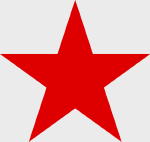Dragon DRR60305 Soviet SU-100 Tank Destroyer - 1st Guards Mechanized Corps, Hungary, 1945 (1:72 Scale)
"By powerful artillery fire, air strikes, and a wave of attacking tanks, we're supposed to swiftly crush the enemy."
- Marshal Georgi K. Zhukov
 Designed as a tank destroyer, the SU-100 was used extensively during the last year of World War II and saw service for many years afterwards with Soviet allied armies around the world. It was developed in 1944 as an improvement to the SU-85, built on the same chassis as the T-34-85 tank. It was designed and built at the UZTM (Ural Heavy Machinery Factory, also called Uralmash) in Yekaterinburg. The SU-100 quickly proved itself to be among the best self-propelled anti-tank guns of World War II, able to penetrate 125 mm of vertical armor from a range of 2,000 meters. This was quite capable of defeating any German tank in service.
Designed as a tank destroyer, the SU-100 was used extensively during the last year of World War II and saw service for many years afterwards with Soviet allied armies around the world. It was developed in 1944 as an improvement to the SU-85, built on the same chassis as the T-34-85 tank. It was designed and built at the UZTM (Ural Heavy Machinery Factory, also called Uralmash) in Yekaterinburg. The SU-100 quickly proved itself to be among the best self-propelled anti-tank guns of World War II, able to penetrate 125 mm of vertical armor from a range of 2,000 meters. This was quite capable of defeating any German tank in service.
The development was conducted under supervision of L. I. Gorlitskiy, chief designer of all medium Soviet self-propelled guns. Work started in February 1944 with the first SU-100 prototype, called "Object 138", built a month later. After intensive testing with different models of the 100mm gun, Soviet engineers approved the D-10S gun for mass production. This gun was developed in the Constructors Bureau of Artillery Factory No. 9 under guidance of F. F. Petrov. After the Second World War, it was installed on T-54 and T-55 tanks, and its derivatives were in service forty years after its initial development. The hull of the SU-100 had a number of major improvements over another tank destroyer, the SU-85. To begin with, the thickness of the front armor plate was increased from 45 to 75mm and the commander's workplace was created in a small sponson on the right side of the hull. With a separate commander's cupola, this greatly improved the effectiveness of the commander. And, for better ventilation, two ventilator units were installed on the SU-100, whereas the SU-85 has to make do with only one. Eventually, mass production of the SU-100 started in September 1944.
Pictured here is a 1:72 scale Soviet SU-100 tank destroyer that was attached to the 1st Guards Mechanized Corps then deployed to Hungary during 1945.
Sold Out!
Dimensions:
Length: 3.5 inches
Width: 1.5 inches
Release Date: September 2007
Original Issue Price: $19.99
Historical Account: "The Eastern Wall" - The Soviet juggernaut got rolling in earnest with the advance into the Germans' Orel salient in August 1943. The diversion of Hitler's Grossdeutschland Division from Belgorod to Karachev could not halt the tide, and a strategic decision was made to abandon Orel, which fell to the Red Army on August 5th, 1943, so they could fall back to the Hagen line in front of Bryansk. To the south, the Soviets blasted through Army Group South's Belgorod positions and headed for Kharkov once again.
Though intense battles of movement throughout late July and into August 1943 saw the Germans blunting Soviet tank attacks on one axis, they were soon outflanked on another line to the west as the Soviets advanced down the Psel. Kharkov had to be evacuated for the final time on August 22nd, thus ending the battle for this all-important city.
The German forces on the Mius, now constituting the 1.Panzer Armee and a reconstituted 6.Armee, were by August too weak to sustain a Soviet onslaught on their own front, and when the Soviets hit them they had to fall back all the way through the Donbass industrial region to the Dnieper, losing the industrial resources and half the farmland that Germany had invaded the Soviet Union to exploit. At this time, Hitler agreed to a general withdrawal to the Dnieper line, dubbed the
Ostwall, a line of defensive fortifications similar to the Westwall which situated along the West German frontier. Trouble was, it hadn't been built yet, and by the time Army Group South had evacuated eastern Ukraine and begun withdrawing across the Dnieper during September, the Soviets were fast on their heels. Tenaciously, small units paddled their way across the 3-km (2-mile) wide river and established bridgeheads. A second attempt by the Soviets to gain land using parachutists, mounted at Kanev on September 24th, proved as luckless as at Dorogobuzh eighteen months previously, and the paratroopers were soon repelled - but not before still more Red Army troops had used the cover they provided to get themselves over the Dnieper and securely dug in. As September proceeded into October, the Germans found the Dnieper line impossible to hold as the Soviet bridgeheads grew and grew, and important Dnieper towns started to fall, with Zaporozhye the first to go, followed by Dnepropetrovsk.


